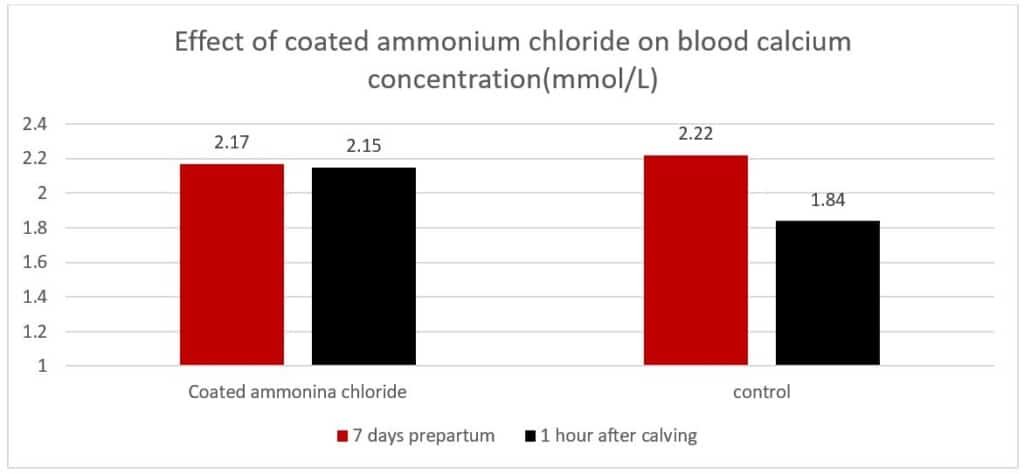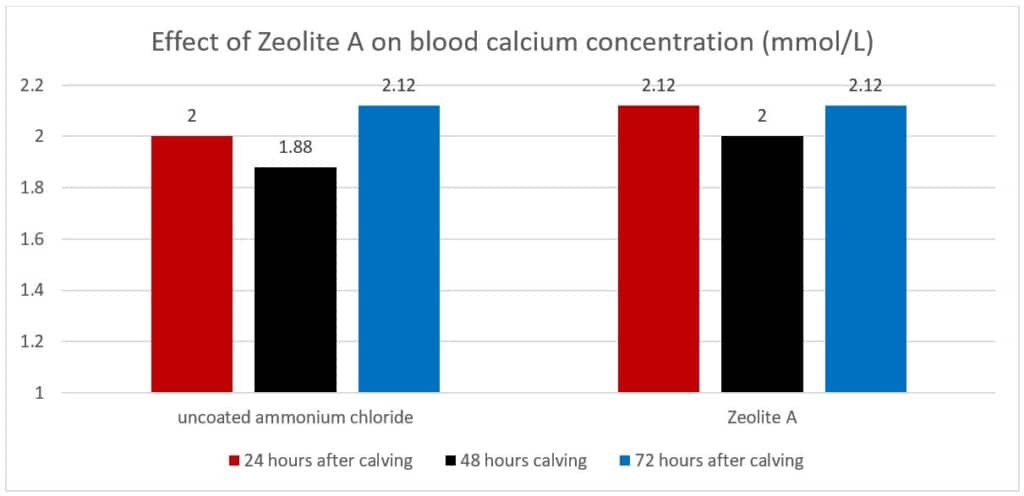Milk fever is a hypocalcaemic paresis at parturition, caused by the sudden and large demand of calcium from blood due to the onset of lactation in dairy cows. It is now clear that this large demand of calcium can not be met by dietary calcium supplementation but regulated by bone calcium homoeostasis mechanism.
A nutrient balanced diet specially formulated for prepartum cows can effectively prevent hypocalcemia and increase Ca availability during the periparturient by maintaining Ca homeostasis. Currently, there are two dietary approaches to prevent milk fever.
- Create a negative dietary cation-anion difference (DCAD)
It is demonstrated that by adding anions, reducing prepartum DCAD from +200 to -100 (-50 to -150) mEq/kg increased blood Ca on the day of parturition, increased postpartum dry matter intake (Figure 1). The coated ammonium chloride is an anionic salt with good palatability, providing -13,088 mEq/kg DCAD value.

Figure 1. Effect of coated ammonium chloride on blood calcium concentration
- Add synthetic zeolite A to bind up Ca in the gut.
Zeolite addition does not acidify the diet but bind Ca in the gut to mobilize Ca from bone. Compared with normal (uncoated ammonium chloride), Zeolite A addition showed the higher blood Calcium concentration at 48 hours after calving (Figure 2).

Figure 2. Effect of Zeolite A on blood calcium concentration (mmol/L)